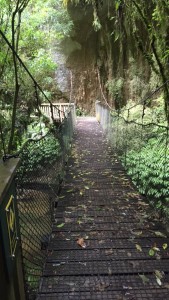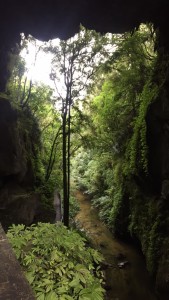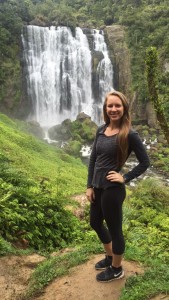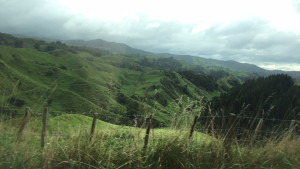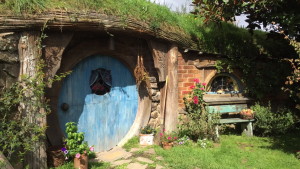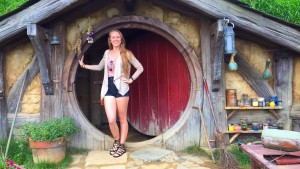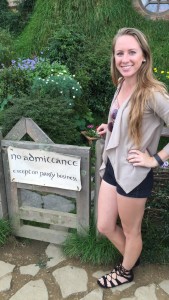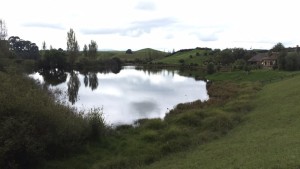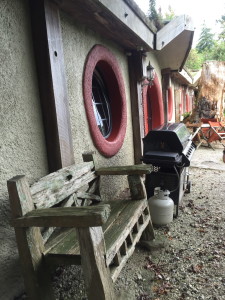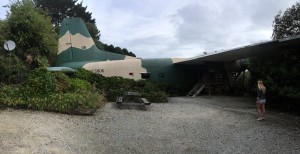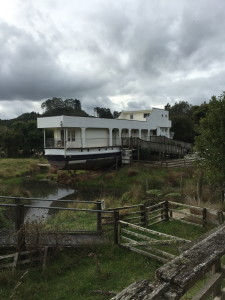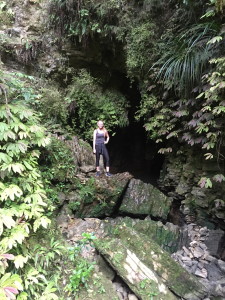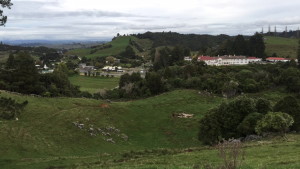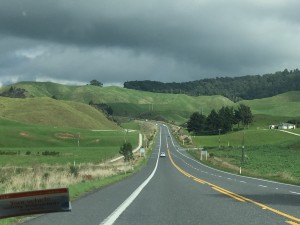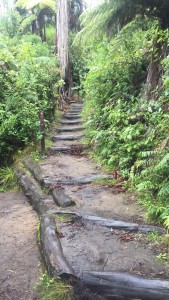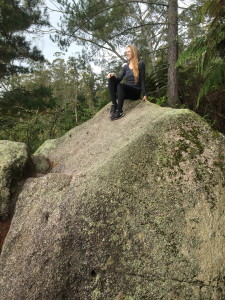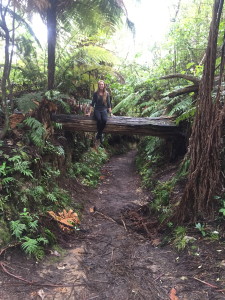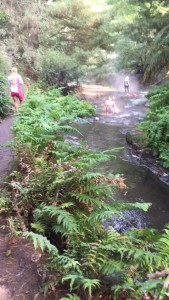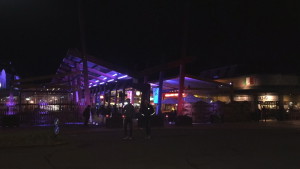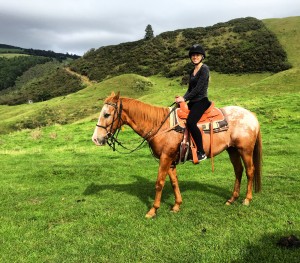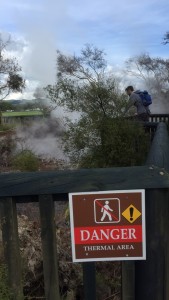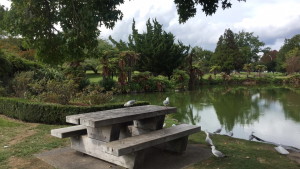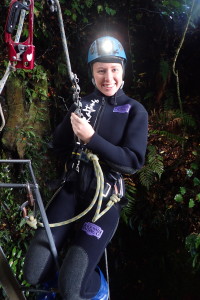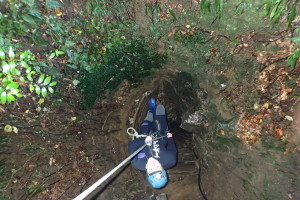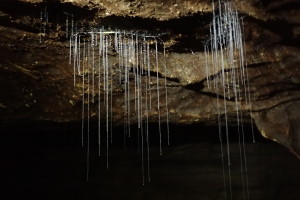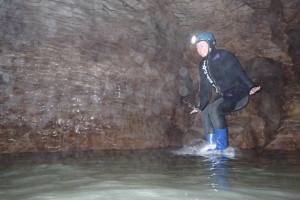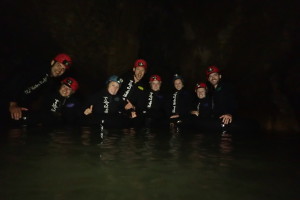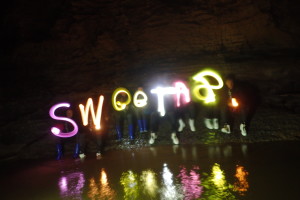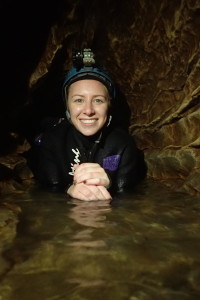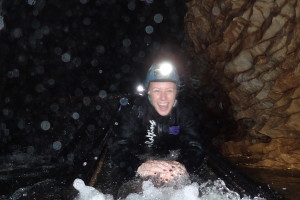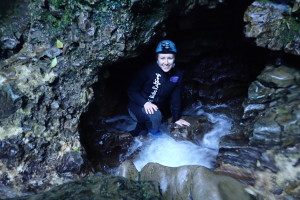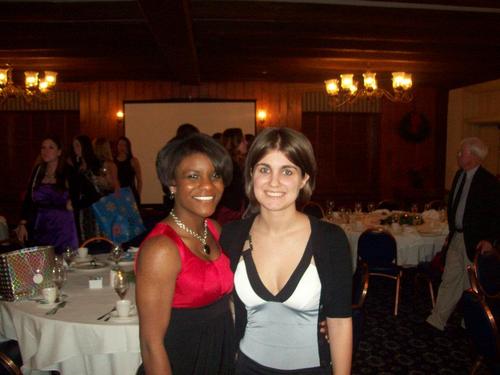New Zealand is an undoubtedly beautiful country. Unfortunately, since I arrived, I have been cooped up in Wellington, stuck between classrooms and dorm rooms. So when the mid-trimester break rolled around, I was itching to get out. The South Island proved to be too expensive to move around, and further trips such as Australia and Fiji were out of the question, so I decided to go north. $150 later, I had my passport for the Naked Bus, a curiously titled service that specializes in cheap, clothed public transit. Five bus rides in ten days, taking me from Wellington to Taupo, then Rotorua, then Waitomo, then Auckland. The final trip would be a marathon 12-hour ride back to the capital.
Away to Taupo
The first stop on the trip was Taupo, a small tourist town on the shore of an enormous lake of the same name. Known for its hot springs and scenic landscapes, Taupo is a nice place to stay for anyone expecting a full schedule of activities. Like many places in rural New Zealand, Taupo is loaded with options for thrill seekers and casual travelers alike, from skydiving to bungy jumping to horseback riding to scenic lake tours. The area also houses Huka Falls, which is reportedly the most visited attraction in New Zealand. This waterway, which can fill an Olympic-sized swimming pool in two minutes, is a good two hour walk from the center of town, and is well worth the trip. After a day of horseback riding and hiking, it was incredible to head down to the hot springs and lay in the water for a couple of hours. The best part is: free! I spent entire day relaxing in a spa without spending a dime.
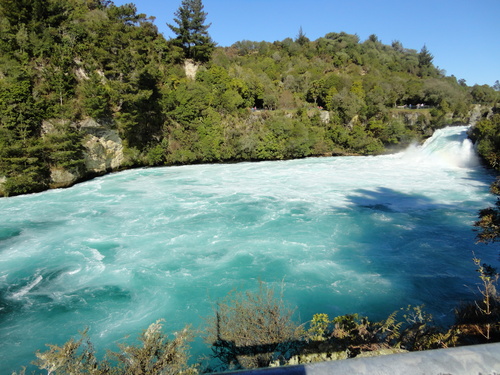
Away to Rotorua
If there is anything you need to know about Rotorua, it is that the town smells. It smells bad. Due to the high geothermal activity, the entire area reeks of sulfur, although it is much stronger in some areas. My hostel was, of course, in such an area. Don’t let this deter you, though; the town is arguably the North Island’s biggest tourist spot, and there are plenty of activities that reflect that. I spent the longest amount of time there, and if you’re traveling around the North Island, I would suggest you do the same. In the four days I stayed in Rotorua, I went rafting, luging, zorbing and hiking in the Redwoods. Coupled with going to bars almost every night, this turned out to be the most expensive leg of my journey, but it was well worth it. The rafting experience was excellent, despite the fact that we flipped on the highest commercial fall in the Southern Hemisphere, something I was a bit wary of beforehand. Luging and Zorbing are relatively cheap and took up an entire day, and both are once-in-a-lifetime opportunities (Both are almost exclusive to New Zealand for obvious insurance issues.) For those of you that don’t know, Zorbing is an activity invented in New Zealand that involves people getting inside a giant plastic ball and rolling down a hill. I did the HydroZorb, which is essentially a hot tub rolling down a hill.

Away to Waitomo
Waitomo is, to put it bluntly, a hick town. The kind of place where the only motel in the area has a noose hanging out front and the cows outnumber people. Made up of various farming properties and the Maori families that own the famous caves in the area, it is not exactly outsider friendly. With no car or public transit options, we were forced to walk about 2km to anything substantial. However, once I got over the initial aggravation of hauling my bags down a gravel road to the hostel, the atmosphere of the town eased my tension. For one, there is almost no light pollution, and anyone who enjoys admiring the sky will not be disappointed. The view at night is by far the clearest I’ve ever seen, which granted is not saying much, being from the ever-lit American suburbs.
As I said before, Waitomo is famous for its cave systems: over 300 snake underneath the hills for kilometers, although only a fraction of them are open to the public. The most popular of these are the Glowworm, Aranui and Rurakuri Caves, and of these I explored the first two. If you want a relaxing, educational experience, this is your best bet. The package was a very reasonable price, and ended up being much more rewarding than I assumed. My guides were both Maori, and one was the great-granddaughter of the chief who discovered the caves almost 150 years ago. They were incredibly knowledgeable about the history and contents of the structures, and were open to questions and requests. The tours do not last that long (each was about 45 minutes), but they do not disappoint. The Glowworm Cave, while less impressive than Aranui in size and formation, ended with a silent boat ride through a small underground grotto whose ceiling harbored countless glowworms.

Fun Fact: There are now more cows than sheep in New Zealand. New Zealand also produces 1/3rd of the world’s dairy products.
Away to Auckland
Auckland is New Zealand’s largest and most populous city, and it feels that way. Whereas Wellington is defined by three or four streets, Auckland has a much more sprawling cosmopolitan layout. I did not get the chance to go out on the town, and for that I’m sort of glad; most of my experiences in big city bars have not been that enjoyable. I arrived late at night and stayed in my hostel for approximately 10 hours, which is about as long as I would ever want to stay in an urban hostel. Simply put, they suck. They’re big, dirty, cheaply made and yet so expensive to use (one load of laundry cost about $6.) I much prefer the smaller hostels of Taupo, Rotorua and Waitomo, where the receptionists know your name and the kitchen feels like the one in your home as opposed to the one in your university. For the second night, I had my first CouchSurfing experience. For those that don’t know, CouchSurfing is a non-profit project based out of San Francisco that aims to let people around the world connect with each other and set up “free” accommodation at their houses. While there are never any monetary transactions between the parties, it is generally understood that the travelers will compensate the hosts in the form of alcohol, a night on the town, or a home-cooked meal. This service is not about finding an anonymous couch to sleep on for one night; it is an opportunity to meet and learn about new people, and many experienced hosts stick to this. There is a very clear etiquette that must be adhered to when talking and scheduling a stay, and failure to do this will most likely result in a rejection email.
Anyway. I stayed with a few Kiwis who had moved to Auckland from Christchurch after the earthquake. They had some amazing stories of being in the city during the event, and while I ended up spending more on wine for everyone than another night at the hostel, it was a much better experience than sleeping in a cheap cot that may or may not have had bedbugs.
The trip back to Wellington felt strange. I had been away for only ten days, and I had only lived in New Zealand for two months, but it felt like I was going home.
As per usual, here are some tips for traveling around New Zealand:
1. Pack light. I had a duffle bag and laptop bag, both full of books, clothes, chargers, food, and other crap that I hardly used. I prepared for several different scenarios which, in retrospect, I could have dealt with in a much more efficient way. Forget the raincoat and second jacket, and only bring a computer if you absolutely have to. There are plenty of internet cafes or terminals inside the hostels, and although they come at a pretty hefty price (the standard was $1 for 15 minutes), buying a long-term internet card might be worth not having to lug around an extra bag.
2. Budget your time and money. It can be very easy to book many activities on a whim (in fact, many of the things we did were booked two hours or less in advance, and some we just showed up to). This can get incredibly expensive very quickly, and can often eat up the short time you might have in that town. Before you go, plan the big activities and book them in advance so you know exactly how much you will be spending. Leave aside a few hours for relaxing, sightseeing, and eating of course. In each place we visited, there were also a ton of free options, like hiking trails or just sitting outside and watching the stars.
3. Rotorua smells like rotten eggs. I can’t stress this enough, it was pretty gross.
4. For smaller towns, definitely stay in hostels. You will almost certainly meet a ton of cool people who like to have a good time, and the prices can’t be beaten. If you go to more urban areas like Auckland or Wellington, it might be worth it to sign up for CouchSurfing. I had to make a $19 donation, but once that’s paid, you have access to literally thousands of places to sleep for the price of a bottle of wine or a display of some culinary skills.
5. Charge your stuff whenever you can get the chance. More often than not, your hostel room will have one outlet. Take these opportunities to make sure your cell phone, iPod, computer, camera and other electronics are juiced up, because if they run out you could be really inconvenienced.
6. If you go horseback riding, secure your pockets. My brand new camera flew out of my pocket on the first trot, and while I found it after trekking through the trail for half an hour, I would not want to go through that again. Better yet, leave all of your belongings somewhere safe before getting on the horse.
7. If you’re drinking, don’t just go to one bar. It’s pretty easy in towns like Taupo and Rotorua to stay in one place the entire night (sometimes it’s unavoidable, as all of the other bars close down and come to you), but take the time to look around and find another local bar that isn’t full of backpackers. It could be even better than what you had planned.
8. Pak ‘N Save is backpacker heaven. $20-30 can get you enough oatmeal, trail mix, milk and other food for a week, assuming you know how to ration and cook. Also, look out for free stuff. Some of our hostels gave us free rice or pasta (enough for a family of four in our case) or barbeques at the bars. All totaled, we probably got about a dozen free meals throughout the 10 day trip.
9. Make sure your camera has enough memory. Don’t start your trip with room for only 100 pictures, because that will probably be gone in the first two days.
10. Don’t stand up when Zorbing. You will fall.
11. Don’t be afraid to ask for rides. I’m not advocating hitchhiking, but it might be worth it to make friends with locals or people in your hostel with cars, as walking 2km to an activity and back can be excruciating.
Location: New Zealand
